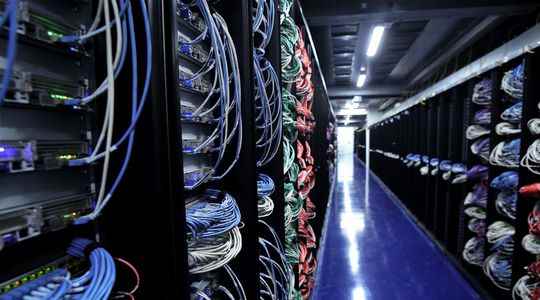A successful world premiere. Off the coast of Orkney, in the Scottish Sea, Microsoft unearthed its data center submarine from the depths where it had rested since the summer of 2018. Covered in seaweed and sea anemones, Northern Isles nonetheless produced excellent results: a lower failure rate than at the accustomed to the 864 servers enclosed within it, thanks to the absence of oxidation and, above all, to a tank powered 100% by renewable energies and whose cooling, provided by seawater, requires almost no additional electricity.
While a Chinese group has just followed in the footsteps of the American giant, the question arises: does the future of data centers lie in the depths of the oceans? “Innovation is interesting, but it is illusory to believe that we will be able to move all the servers there,” says Yann Lechelle, general manager of Scaleway, a subsidiary of Iliad and second player in the French cloud behind OVH. On land, this leader is also working to reduce the consumption of four structures. An absolute necessity. With the digital explosion, the infrastructure that hosts in servers the zettabytes of data generated by the Internet – the data center – is also unfolding at breakneck speed.
And yet. A recent study by the International Energy Agency puts the weight of these data centers at 1% of the global energy mix. A stable proportion over the last decade. A feat while at the same time the volume of exchanges has been multiplied by 30. Behind this feat: “A common awareness for all players as well as an acceleration of commitments driven by innovation”, wants to believe Géraldine Camara, general delegate of France Datacenter.
Energetic efficiency
This is the case, for example, at Interxion, a world leader in the sector. Owner of a hundred structures in Europe (13 in France), the company already claims to be carbon neutral for all of its French activities. To achieve this, it deploys a three-pillar strategy: energy efficiency in the construction of infrastructures, the use of renewable energies produced in France to supply them, and finally carbon offsetting for the part that it cannot reduce. “At the end of 2020, our carbon impact peaked at 2,435 tonnes of CO2 equivalent. That is barely the footprint of 210 French people per year”, welcomes Fabrice Coquio, president of Interxion France. In Marseille, the company also uses a method of cooling servers using water from an old mine that it diverted. The result is a system that is up to 30 times more economical than air conditioners.
It’s also about innovation at Scaleway. In Saint-Ouen-l’Aumône in the Val-d’Oise, the DC5, a data center with an area of 16,000 square meters, operates using an exchange system between water and air cooled using a so-called adiabatic process. , and therefore without a cooling system. To hear Yann Lechelle, the DC5 consumes 40% less energy than the average, making it one of the most efficient on the continent. Use of the heat created by the data center to power district heating networks or algorithms to run the data center at full power when electricity production is the least carbon-intensive, the industry is multiplying initiatives.
Part of the industry anyway. “If you go to the bottom of Texas, you still find infrastructures cooled with air conditioning and consuming a lot of water”, warns Yann Lechelle. Without going that far, some old data center French or European built fifteen years ago do not really offer optimal energy efficiency, notes Géraldine Camara. How to tackle it? “To move the lines, there is no better than regulation and cost”, summarizes Fabrice Coquio. A law that came into force in 2022 provides for the end of a tax allowance for centers that do not comply with a series of good energy practices. The carrot or the stick.
